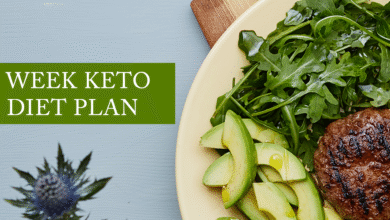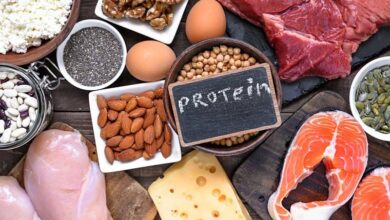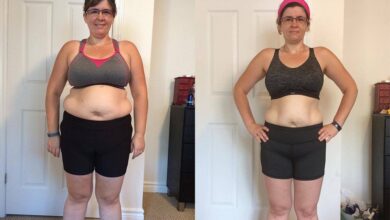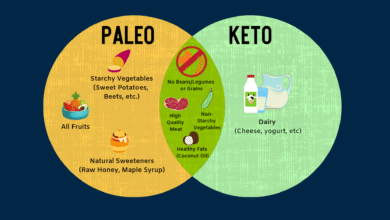Embarking on a ketogenic (keto) diet can feel like navigating a maze, especially when everyone claims their version is “the best.” But the truth is, keto is flexible. It’s not a rigid, one-size-fits-all program. In this comprehensive guide, I’ll walk you through 5 simple keto plans designed for weight-loss success—whether you live in Africa, the United States, or Europe. We’ll dive into real-world tips, meal ideas, macronutrient strategies, pitfalls to avoid, and how to adapt keto to your lifestyle. Let’s get started!
Read Also “Keto vs Low-Fat Diet Tips: 8 Powerful Tips to Choose the Best for You
Why Keto Works for Weight Loss
Keto is built on a simple yet powerful premise: by drastically reducing carbs and increasing healthy fats, you push your body into a metabolic state called ketosis. In ketosis, your body burns stored fat for energy instead of glucose. This shift can lead to accelerated fat loss—and it’s backed by research.
When carbs are restricted (usually to 20–50 grams per day), insulin levels drop, which reduces fat storage and encourages fat burning. Moreover, ketones (produced by your liver from fats) have appetite-suppressing effects, making it easier to eat less without feeling deprived.
Also, many people report stable energy levels, fewer cravings, and less blood sugar fluctuation. For those managing type 2 diabetes or metabolic syndrome, keto can also help regulate glucose and insulin.
But here’s the thing: not all keto diets are made equal. The “simple” plans I’ll share aim to minimize confusion, reduce decision fatigue, and help you stick to it long term.
How to Use This Guide
- Pick one plan that feels doable for your lifestyle.
- Use the sample meals and macro targets as a baseline—adapt as needed.
- Track results (weight, measurements, energy, mood) for 2–4 weeks.
- Adjust gradually—don’t reinvent everything overnight.
- Supplement wisely (e.g. electrolytes, fiber) and always check with your physician if you have medical conditions.
Plan 1: Lazy Keto—Keep It Easy
What is Lazy Keto?
Lazy keto means you keep carbs very low (20–50g/day) but don’t obsess over counting fat or protein precisely. You avoid sugar, bread, pasta, grains, and starchy vegetables. Everything else is fair game.
Why choose this version? It’s simple, low-maintenance, and less stressful for beginners. You won’t need to weigh or measure every bite. Instead, you just avoid high-carb foods and eyeball your intake.
How to Do Lazy Keto
- Cut out all high-carb foods: bread, rice, potatoes, cereal, sugary drinks, most fruits (except berries).
- Focus on whole foods: meat, eggs, fish, non-starchy vegetables, nuts, dairy, healthy fats (olive oil, avocado, butter).
- Limit hidden carbs: sauces, dressings, condiments. Read labels.
- Track carbs only: if a food has < 5 g net carbs per serving, it’s usually safe.
- Don’t stress fat or protein—just eat until satisfied.
Pros and Cons of Lazy Keto
Pros:
- Very low effort
- Easier to adopt long term
- Less anxiety over macros
Cons:
- Risk of overeating protein or fat
- May slow fat loss if caloric intake is too high
- Less precise control
Sample Lazy Keto Day
| Meal | Foods |
|---|---|
| Breakfast | Scrambled eggs in butter + spinach + avocado slices |
| Lunch | Grilled chicken thigh + mixed greens + olive oil dressing |
| Snack | Cheese slices + a few almonds |
| Dinner | Pan-seared salmon + steamed broccoli + garlic herb butter |
Aim to stay under 30–40g net carbs. Don’t worry too much about hitting fat or protein numbers—just focus on appetite and how your body feels.
Plan 2: Standard Keto with Macro Tracking
What is Standard Keto?
This is the classic approach: you plan your macronutrients (carbs, fats, proteins) closely. A common ratio is 5–10% carbs, 20–25% protein, 65–75% fat. For example, on a 2,000-calorie day, that might be 30–50g net carbs, 100–125g protein, and the rest from fats.
Why Use It?
When you want precision—e.g. for stubborn weight loss, athletic goals, or medical reasons—macro tracking helps ensure you’re not overconsuming hidden calories or protein that could be turned into glucose. It increases accountability.
Steps to Apply Standard Keto
- Calculate your maintenance calories (via TDEE calculators online).
- Set a caloric deficit (e.g. 10–25% less than maintenance).
- Allocate macros (carbs low, moderate protein, rest fat).
- Track every meal for at least 2 weeks using apps like Carb Manager, Cronometer, or MyFitnessPal.
- Adjust based on results—if fat loss stalls, drop fat intake a bit or increase activity.
Sample Macro Plan (2,000 kcal)
- Net Carbs: 30g
- Protein: 100g
- Fat: ~165g
Sample Day
| Meal | Foods | Macronutrients (approx) |
|---|---|---|
| Breakfast | 3 eggs + cheddar + butter + spinach | 4g carbs / 24g protein / 36g fat |
| Lunch | Grilled steak + kale salad + olive oil | 6g carbs / 35g protein / 45g fat |
| Snack | Greek yogurt + few berries + chia seeds | 8g carbs / 12g protein / 10g fat |
| Dinner | Chicken thigh + cauliflower mash + cream sauce | 12g carbs / 29g protein / 74g fat |
Adjust portion sizes to hit your daily macro targets.
Plan 3: Cyclical Keto (CKD) – Carb Refeeds
What is Cyclical Keto?
In cyclical keto, you follow a strict keto diet during the week, then have 1–2 “refeed” days per week where you intentionally eat higher carbs (often 100–200g) to refill glycogen and support performance.
This variant is popular with athletes or those who find strict keto too limiting long term.
Why Use Cyclical Keto?
- Boosts workout performance
- Prevents metabolic slowdown
- Psychological relief (you can enjoy occasional carbs)
- May support hormonal balance
How to Implement CKD
- Choose your carb days—often Fridays and Saturdays.
- Keep workouts heavy on carb days so carbs go into muscles, not fat.
- Choose high-quality carbs on refeed days: sweet potatoes, rice, oats, fruits.
- Return to strict keto eating after refeed days.
Typical Week Structure
| Day | Carb Intake | Type of Meals |
|---|---|---|
| Mon–Thurs | 20–50g | Standard keto |
| Fri–Sat | 100–200g | Refeed days |
| Sunday | 20–50g | Return to keto |
Tips for Carb Days
- Start with 100g, evaluate how your body reacts
- Keep protein moderate
- Carbs should come from complex sources (not junk food)
- Don’t overeat fat on those days
Sample Refeed Day
| Meal | Foods |
|---|---|
| Breakfast | Oatmeal with berries + Greek yogurt |
| Lunch | Brown rice bowl + grilled chicken + veggies |
| Snack | Banana + a bit of nut butter |
| Dinner | Sweet potato + lean fish + greens |
Then revert back to strict keto the next day.
Plan 4: Targeted Keto (TKD) – Pre/Post-Workout Carbs
What is Targeted Keto?
TKD allows you to consume a small amount of fast-digesting carbs before or after workouts—usually 20–50g. The rest of your day remains in strict keto. The idea is to supply energy for workouts while maintaining ketosis the rest of the time.
Why Use TKD?
- Better workout performance
- Prevents energy crashes
- Useful if you train moderately to intensely
How to Practice TKD
- Time carbs around training (30 minutes before or after).
- Choose fast carbs like dextrose, glucose powder, or simple fruits.
- Keep rest of meals keto (very low carbs).
- Track how your body responds—if you stay in ketosis between workouts.
Sample TKD Schedule
| Time | Meal |
|---|---|
| 30 min pre-workout | 20g dextrose or slice of banana |
| Post-workout | Protein shake + fats |
| Other meals | Keto meals throughout the day |
Sample Day
| Meal | Foods |
|---|---|
| Breakfast | Omelet + cheese + spinach |
| Pre-workout | 20g glucose powder |
| Workout | Resistance training or HIIT |
| Post-workout | Whey protein + MCT oil |
| Lunch | Grilled beef + asparagus + butter |
| Dinner | Pork chops + zucchini + cream sauce |
You’re balancing energy and fat burning simultaneously.
Plan 5: Mediterranean Keto – Blend Keto with Mediterranean Diet
What is Mediterranean Keto?
This version combines the benefits of keto with Mediterranean-style foods: olive oil, fish, vegetables, nuts, seeds, and moderate dairy. You still keep carbs very low but focus on nutrient-rich, anti-inflammatory ingredients.
Why Use It?
- Health benefits from Mediterranean diet (heart health, longevity)
- Easier sustainability
- Delicious foods
- Fewer processed ingredients
Core Principles
- Healthy fats: olive oil, olives, avocado, fatty fish
- High-quality proteins: fish, poultry, eggs
- Low-carb vegetables: leafy greens, peppers, eggplant, zucchini
- Limited dairy (cheese, yogurt in moderation)
- Herbs and spices for flavor
Sample Mediterranean Keto Day
| Meal | Foods |
|---|---|
| Breakfast | Greek yogurt (unsweetened) + nuts + chia |
| Lunch | Grilled salmon + mixed greens + olive oil-lemon dressing |
| Snack | Olives + feta cheese |
| Dinner | Lamb chops + roasted eggplant + vegetables cooked in olive oil |
This version adds a healthful twist that people in coastal regions of Africa, Europe, or the U.S. might resonate with.
Comparing the 5 Plans: Which One is Right for You?
| Plan | Best For | Difficulty | Flexibility | Performance Support |
|---|---|---|---|---|
| Lazy Keto | Beginners, those wanting simplicity | Low | High | Moderate |
| Standard Keto | Precision, stubborn fat loss | Medium | Medium | Good |
| Cyclical Keto (CKD) | Athletes, carb lovers | Higher | Lower (due to scheduled carbs) | High |
| Targeted Keto (TKD) | Regular exercisers | Medium | Medium | Better workouts |
| Mediterranean Keto | Health-conscious, longevity seekers | Low–Medium | High | Moderate |
- If you’re new to keto, Lazy or Mediterranean keto may be your best start.
- If you want speed and control, Standard keto gives you precision.
- If you work out intensely, TKD or CKD can help maintain performance.
- If you value sustainability and flavor, Mediterranean keto may win your heart.
How to Structure Your Macros & Calories
Step 1: Calculate Your Maintenance Calories
Use a Total Daily Energy Expenditure (TDEE) calculator online. Multiply your Basal Metabolic Rate (BMR) by an activity factor. Many calculators adjust for region (Africa, Europe, U.S.).
Step 2: Establish a Deficit
Aim for a safe deficit of 10–25%. For example, if your maintenance is 2,200 calories, a 20% cut gives ~1,760 calories for weight loss.
Step 3: Set Macro Ratios
- Carbs: 5–10% of calories (20–50g net carbs)
- Protein: 20–25%
- Fat: 65–75%
Your exact grams will depend on total calories and your weight/body goal.
Step 4: Adjust Over Time
Track your weight weekly. If you’re losing steadily (0.5–1% body weight per week), stay the course. If you stall for 2–3 weeks, reduce fat intake slightly or add more activity.
Step 5: Monitor Health Markers
- Energy levels
- Sleep quality
- Workout performance
- Blood work (lipids, liver, kidney function if relevant)
Keto Adaptation: The First 2–4 Weeks
What to Expect
- “Keto flu”: headaches, fatigue, irritability as your body transitions
- Digestive changes: constipation or diarrhea
- Increased urination / electrolyte shifts
Coping Strategies
- Hydrate heavily (drink 2–3 liters per day)
- Supplement electrolytes: sodium, potassium, magnesium
- Eat more low-carb veggies for fiber
- Rest, sleep, manage stress
By week 3–4, most people feel improved mental clarity, stable energy, and reduced cravings.
Meal Planning & Grocery Strategy
Batch Cooking & Prep
Choose one day (weekend or off day) to prepare:
- Proteins (grilled chicken, beef, fish)
- Keto sauces or dressings
- Veggies chopped, roasted
- Hard-boiled eggs as snacks
Store in airtight containers for grab-and-go convenience.
Staples to Keep Stocked
- Eggs, butter, heavy cream
- Olive oil, coconut oil, avocado oil
- Meat (beef, chicken, fish)
- Cheese, nuts, seeds
- Low-carb vegetables (leafy greens, zucchini, cauliflower, broccoli)
- Spices, herbs, low-carb condiments
Shopping Tips in Africa / U.S. / Europe
- Buy seasonal local vegetables (cheaper, fresher)
- Buy whole cuts of meat rather than processed meats
- Use local fish varieties
- In Africa, source healthy oils (e.g. palm oil may be high in saturated fats, use sparingly)
- In the U.S. and Europe, take advantage of bulk nuts, frozen low-carb veggies
Tracking & Adjustment over Time
What to Track
- Body weight (weekly)
- Measurements (waist, hips)
- Body composition (if possible)
- Energy, sleep, mood
- Workout performance
When to Make Adjustments
- If fat loss > 1% per week → increase calories slightly
- If fat loss < 0.3% per week for > 3 weeks → reduce fat intake or increase non-exercise activity
- If performance suffers → consider shifting to TKD or CKD
- Always make small changes, not big swings
Common Pitfalls & How to Avoid Them
Overeating Fat
Fat is not a “free pass.” You still need to control total calories if weight loss is your goal.
Tip: Use a food scale or tracking app early on to get a sense of portion sizes.
Eating Hidden Carbs
Sauces, dressings, processed meats, packaged foods often sneak in carbs.
Tip: Read labels. Stick to whole foods. Use homemade dressings.
Neglecting Fiber & Vegetables
You need fiber for gut health. Without it, constipation and poor digestion can occur.
Tip: Eat low-carb veggies like spinach, cauliflower, zucchini, broccoli.
Ignoring Electrolytes
Low carb intake causes water and mineral loss, which can trigger cramps, fatigue, headaches.
Tip: Add salt to food, supplement magnesium (~300 mg), and eat potassium-rich low-carb foods (avocado, leafy greens).
Expecting Overnight Results
Weight loss is not linear. Plateaus and “stall” weeks happen.
Tip: Focus on consistency, not perfection. Use multi-week averages rather than daily weigh-ins.
Read Also How to Achieve Long-Term Weight Loss: Keto vs Low-Fat — Which Works Best?
Success Strategies & Mindset Tips
1. Start Simple
Begin with Lazy Keto or Mediterranean Keto. Once you’re comfortable, you can evolve into more advanced versions.
2. Flexibility Results in Longevity
Being too rigid often leads to burnout. Allow occasional social flexibility (within reason) and return to your plan.
3. Use Social Accountability
Join keto communities online or local support groups (Africa, U.S., Europe). Share your successes and struggles.
4. Celebrate Non-Scale Victories
Improved sleep, better skin, more focus, reduced cravings—these are just as important as the number on the scale.
5. Stay Persistent Through Plateaus
If you hit a plateau, review macros, sleep, stress, hormones. Small tweaks often break through.
Frequently Asked Questions (FAQs)
1. Can I follow intermittent fasting (IF) with these keto plans?
Answer: Yes! Many people combine IF (e.g. 16:8, 18:6) with keto for synergy. It often helps reduce appetite and accelerate fat loss. Just ensure you consume enough protein, healthy fat, and electrolyte balance within your eating window.
2. Will keto cause muscle loss?
Answer: Not necessarily. If protein is adequate (20–25% of calories) and strength training continues, most muscle loss is prevented. In fact, fat loss predominates while preserving lean tissue.
3. Do I need supplements on keto?
Answer: Some are helpful—especially electrolytes (sodium, potassium, magnesium), possibly omega-3 fish oil, and maybe a multivitamin. But whole foods should be your main source of nutrients.
4. Is keto safe long-term?
Answer: For many healthy individuals, yes. Studies and anecdotal reports show sustainable weight loss, improved insulin sensitivity, and cardiovascular markers. But always monitor blood work and consult a healthcare provider if you have underlying conditions.
5. Can I eat fruit on keto?
Answer: Most fruits are high in sugar, so they add carbs quickly. Exceptions include small portions of berries (e.g. strawberries, blueberries) in moderation. On refeed or carb days (in CKD), you can include other fruits like bananas or mangoes—but do so mindfully.
Conclusion
If SEO had to summarize: “5 simple keto plans” gives you the flexibility to pick a path that fits your lifestyle while harnessing the fat-burning power of ketosis. Whether you go lazy, standard, cyclical, targeted, or Mediterranean, what matters most is consistency, tracking, and adapting intelligently to your body’s feedback.
Don’t expect overnight miracles—fat loss takes time, patience, and strategy. But with one of these plans, based on local food availability in Africa, the U.S., or Europe, you have a strong framework to succeed. Start small, monitor progress, tweak as needed—and enjoy the journey.




